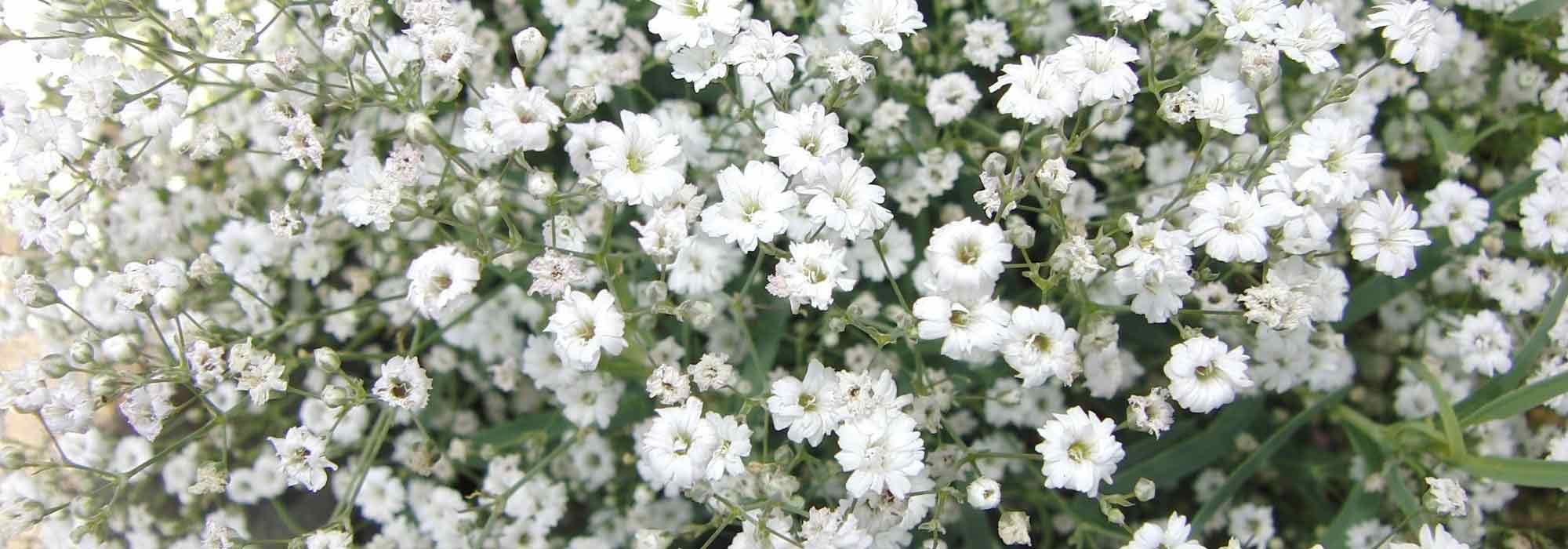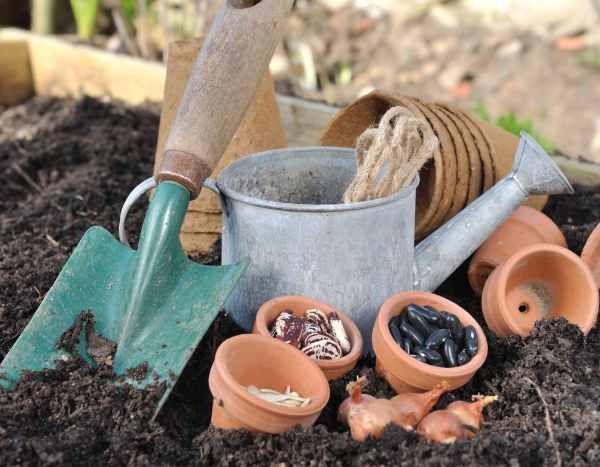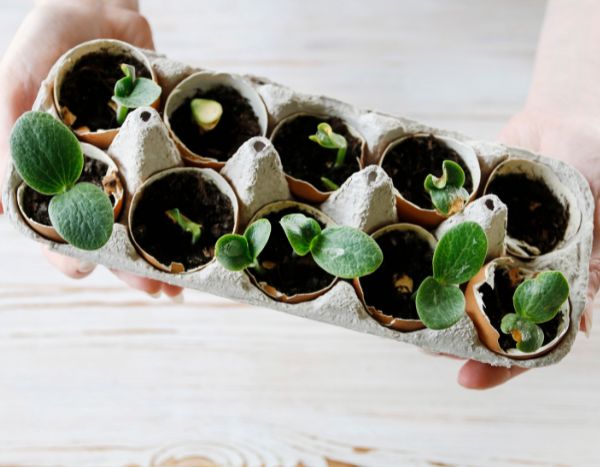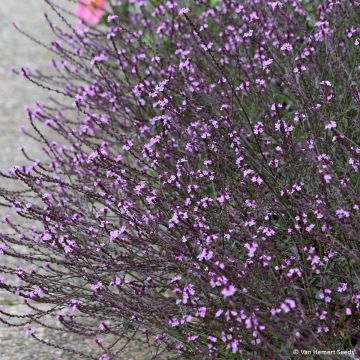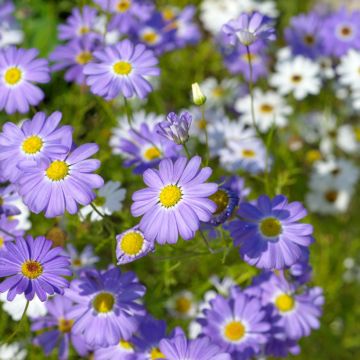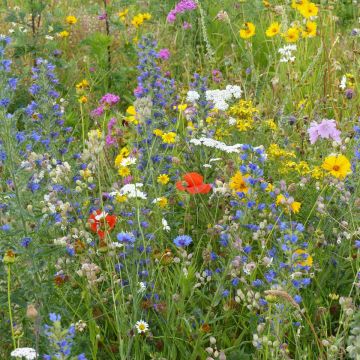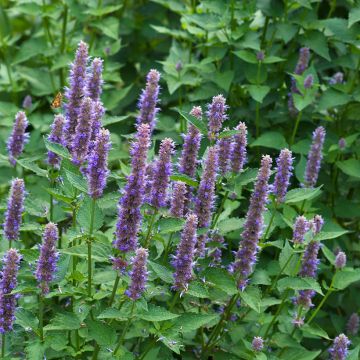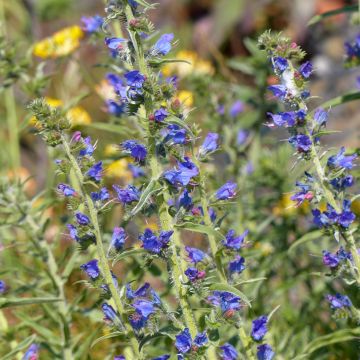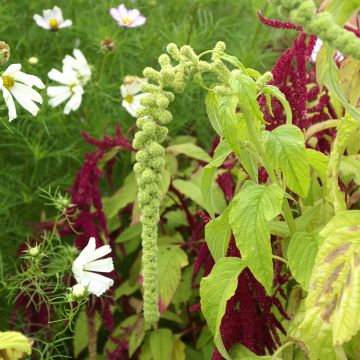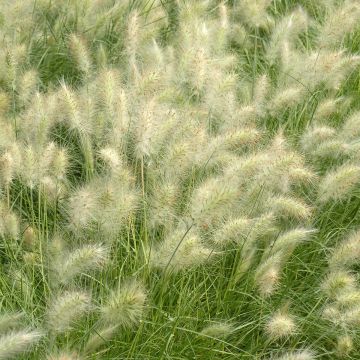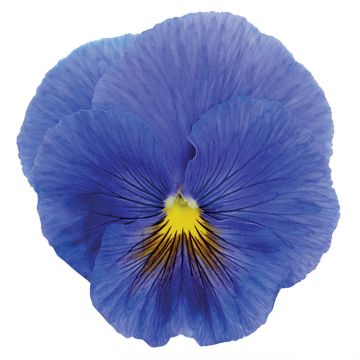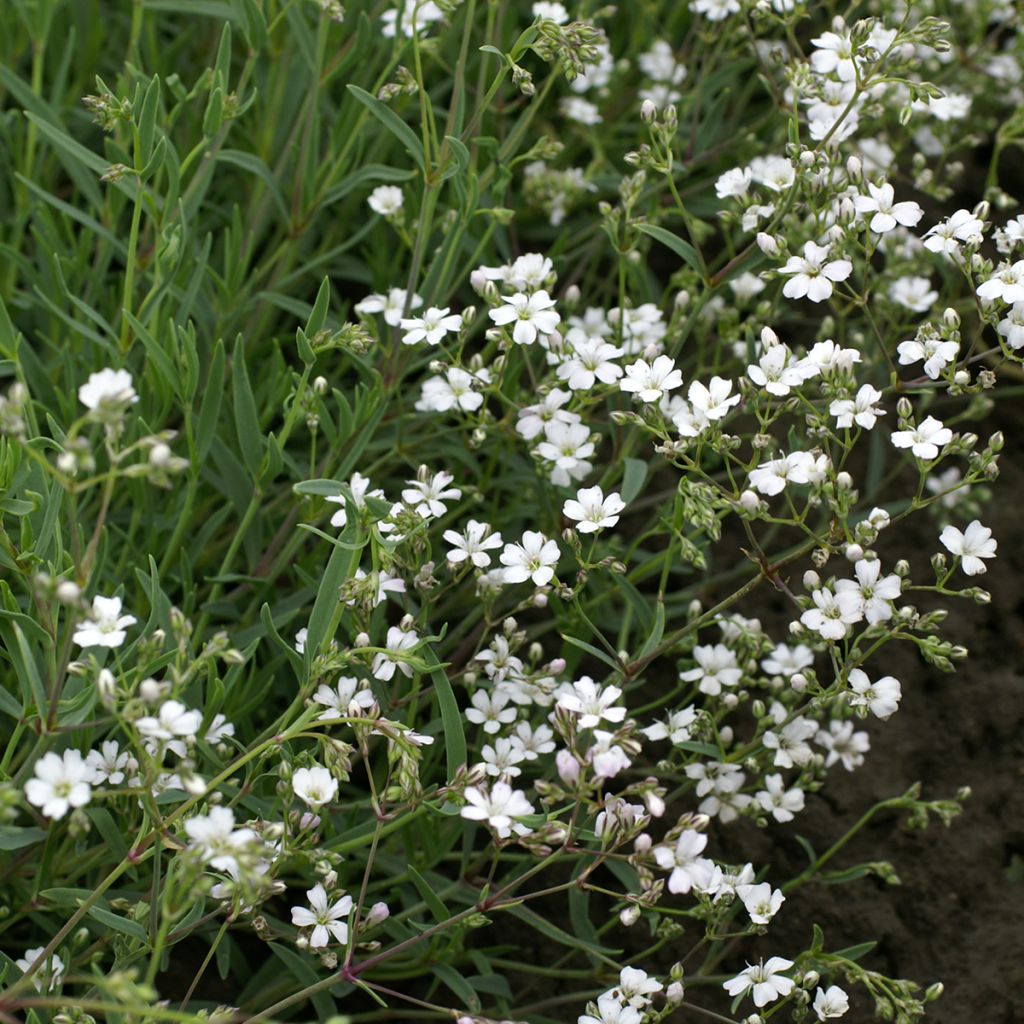

Gypsophila repens Alba seeds - Creeping baby's breath
Gypsophila repens Alba seeds - Creeping baby's breath
Gypsophila repens Alba
Creeping Baby's Breath, Alpine Gypsophila
Special offer!
Receive a €20 voucher for any order over €90 (excluding delivery costs, credit notes, and plastic-free options)!
1- Add your favorite plants to your cart.
2- Once you have reached €90, confirm your order (you can even choose the delivery date!).
3- As soon as your order is shipped, you will receive an email containing your voucher code, valid for 3 months (90 days).
Your voucher is unique and can only be used once, for any order with a minimum value of €20, excluding delivery costs.
Can be combined with other current offers, non-divisible and non-refundable.
Home or relay delivery (depending on size and destination)
Schedule delivery date,
and select date in basket
This plant carries a 6 months recovery warranty
More information
We guarantee the quality of our plants for a full growing cycle, and will replace at our expense any plant that fails to recover under normal climatic and planting conditions.
Does this plant fit my garden?
Set up your Plantfit profile →
Description
Gypsophila repens 'Alba' is a variety of creeping baby's breath prized for its white and airy flowering. It is very bright, becoming covered with countless small star-shaped flowers of pure white between spring and summer, evoking a flowery mist. It is a hardy perennial that forms an elegant ground cover in rockeries and on walls where its creeping stems can cascade down.
Native to mountainous areas of Europe (France, Alps, Balkans, Iberian Peninsula and Italy), creeping baby's breath is well adapted to dry, stony, calcareous and well-drained soils. 'Alba' is the white-flowered form of the species. It is from the Caryophyllaceae family, just like pinks.
Carpeting and prostrate, Gypsophila repens 'Alba' is a vigorous, but non-invasive perennial, ideal as ground cover. The plant forms a spreading cushion reaching approximately 10 to 15 cm in height and 30 to 45 cm in width, or even more depending on conditions. Its foliage is semi-evergreen to evergreen in winter, depending on the climate. It is composed of small, opposite, narrow and slightly fleshy, smooth leaves, measuring 1 to 3 cm. The stems, creeping then slightly ascending, sometimes root at the nodes, contributing to the dense mat effect. The flowering period extends from May to July, and can continue until August if the soil remains a bit moist. Flowers will appear on plants aged 2 years or more. The small, star-shaped, pure white flowers appear in very large numbers on the creeping stems, forming a branched cyme inflorescence that gives the plant a light and mossy, almost airy appearance. Each flower measures about 5 to 8 mm in diameter, but their profusion forms a veritable flowery cushion.
Gypsophila repens 'Alba' loves full sun, which promotes its flowering and tolerates drought once well established. Conditions it will find in a rockery, on a dry stone wall or at the edge of a raised bed. It is a good plant for dry or Mediterranean gardens. It particularly highlights perennials with large flowers like those of peonies or roses. You can also pair it with other ground cover plants like wild thyme and Erigeron karvinskianus, for example. This Gypsophila also adapts very well to planters and flowering pots.
Flowering
Foliage
Plant habit
Botanical data
Gypsophila
repens
Alba
Caryophyllaceae
Creeping Baby's Breath, Alpine Gypsophila
Gypsophila adscendens Gypsophila alpestris Gypsophila dubia Gypsophila erectiuscula
Southern Europe, Balkans, Alps, Caucasus
Planting and care
Sow Gypsophila repens 'Alba' between March and May, or in autumn between September and October, according to your preference. As the seeds are very fine, simply spread them on the surface of a light, well-drained substrate, without burying them deeply. Cover them with a thin layer of sieved compost or sand (about 2 to 3 mm), then keep the whole slightly moist, at a temperature between 18 and 20°C. Germination usually occurs within 10 to 14 days.
If you sow in trays, transplant the young plants as soon as they have two or three true leaves.
Plant out in the open ground from May onwards, once all risk of frost has passed. Choose a full sun location. The quality of the soil is essential: it must be very well-drained, light, poor to moderately rich, preferably chalky or neutral. Absolutely avoid heavy or wet soils, especially in winter. Space the plants 15 to 20 cm apart to allow them to spread well.
Cultivation: this baby's breath is undemanding. There is no need to fertilise heavily: a soil that is too rich would encourage foliage at the expense of the flowers. Once well established, the plant is very drought tolerant. In terms of hardiness, it can withstand temperatures down to -15°C, provided it is planted in a perfectly drained soil — excess moisture in winter being its main enemy. With these few care tips, you will enjoy a bright and long-lasting floral carpet in your garden.
Sowing period
Intended location
Planting & care advice
This item has not been reviewed yet - be the first to leave a review about it.
Similar products
Haven't found what you were looking for?
Hardiness is the lowest winter temperature a plant can endure without suffering serious damage or even dying. However, hardiness is affected by location (a sheltered area, such as a patio), protection (winter cover) and soil type (hardiness is improved by well-drained soil).

Photo Sharing Terms & Conditions
In order to encourage gardeners to interact and share their experiences, Promesse de fleurs offers various media enabling content to be uploaded onto its Site - in particular via the ‘Photo sharing’ module.
The User agrees to refrain from:
- Posting any content that is illegal, prejudicial, insulting, racist, inciteful to hatred, revisionist, contrary to public decency, that infringes on privacy or on the privacy rights of third parties, in particular the publicity rights of persons and goods, intellectual property rights, or the right to privacy.
- Submitting content on behalf of a third party;
- Impersonate the identity of a third party and/or publish any personal information about a third party;
In general, the User undertakes to refrain from any unethical behaviour.
All Content (in particular text, comments, files, images, photos, videos, creative works, etc.), which may be subject to property or intellectual property rights, image or other private rights, shall remain the property of the User, subject to the limited rights granted by the terms of the licence granted by Promesse de fleurs as stated below. Users are at liberty to publish or not to publish such Content on the Site, notably via the ‘Photo Sharing’ facility, and accept that this Content shall be made public and freely accessible, notably on the Internet.
Users further acknowledge, undertake to have ,and guarantee that they hold all necessary rights and permissions to publish such material on the Site, in particular with regard to the legislation in force pertaining to any privacy, property, intellectual property, image, or contractual rights, or rights of any other nature. By publishing such Content on the Site, Users acknowledge accepting full liability as publishers of the Content within the meaning of the law, and grant Promesse de fleurs, free of charge, an inclusive, worldwide licence for the said Content for the entire duration of its publication, including all reproduction, representation, up/downloading, displaying, performing, transmission, and storage rights.
Users also grant permission for their name to be linked to the Content and accept that this link may not always be made available.
By engaging in posting material, Users consent to their Content becoming automatically accessible on the Internet, in particular on other sites and/or blogs and/or web pages of the Promesse de fleurs site, including in particular social pages and the Promesse de fleurs catalogue.
Users may secure the removal of entrusted content free of charge by issuing a simple request via our contact form.
The flowering period indicated on our website applies to countries and regions located in USDA zone 8 (France, the United Kingdom, Ireland, the Netherlands, etc.)
It will vary according to where you live:
- In zones 9 to 10 (Italy, Spain, Greece, etc.), flowering will occur about 2 to 4 weeks earlier.
- In zones 6 to 7 (Germany, Poland, Slovenia, and lower mountainous regions), flowering will be delayed by 2 to 3 weeks.
- In zone 5 (Central Europe, Scandinavia), blooming will be delayed by 3 to 5 weeks.
In temperate climates, pruning of spring-flowering shrubs (forsythia, spireas, etc.) should be done just after flowering.
Pruning of summer-flowering shrubs (Indian Lilac, Perovskia, etc.) can be done in winter or spring.
In cold regions as well as with frost-sensitive plants, avoid pruning too early when severe frosts may still occur.
The planting period indicated on our website applies to countries and regions located in USDA zone 8 (France, United Kingdom, Ireland, Netherlands).
It will vary according to where you live:
- In Mediterranean zones (Marseille, Madrid, Milan, etc.), autumn and winter are the best planting periods.
- In continental zones (Strasbourg, Munich, Vienna, etc.), delay planting by 2 to 3 weeks in spring and bring it forward by 2 to 4 weeks in autumn.
- In mountainous regions (the Alps, Pyrenees, Carpathians, etc.), it is best to plant in late spring (May-June) or late summer (August-September).
The harvesting period indicated on our website applies to countries and regions in USDA zone 8 (France, England, Ireland, the Netherlands).
In colder areas (Scandinavia, Poland, Austria...) fruit and vegetable harvests are likely to be delayed by 3-4 weeks.
In warmer areas (Italy, Spain, Greece, etc.), harvesting will probably take place earlier, depending on weather conditions.
The sowing periods indicated on our website apply to countries and regions within USDA Zone 8 (France, UK, Ireland, Netherlands).
In colder areas (Scandinavia, Poland, Austria...), delay any outdoor sowing by 3-4 weeks, or sow under glass.
In warmer climes (Italy, Spain, Greece, etc.), bring outdoor sowing forward by a few weeks.






























